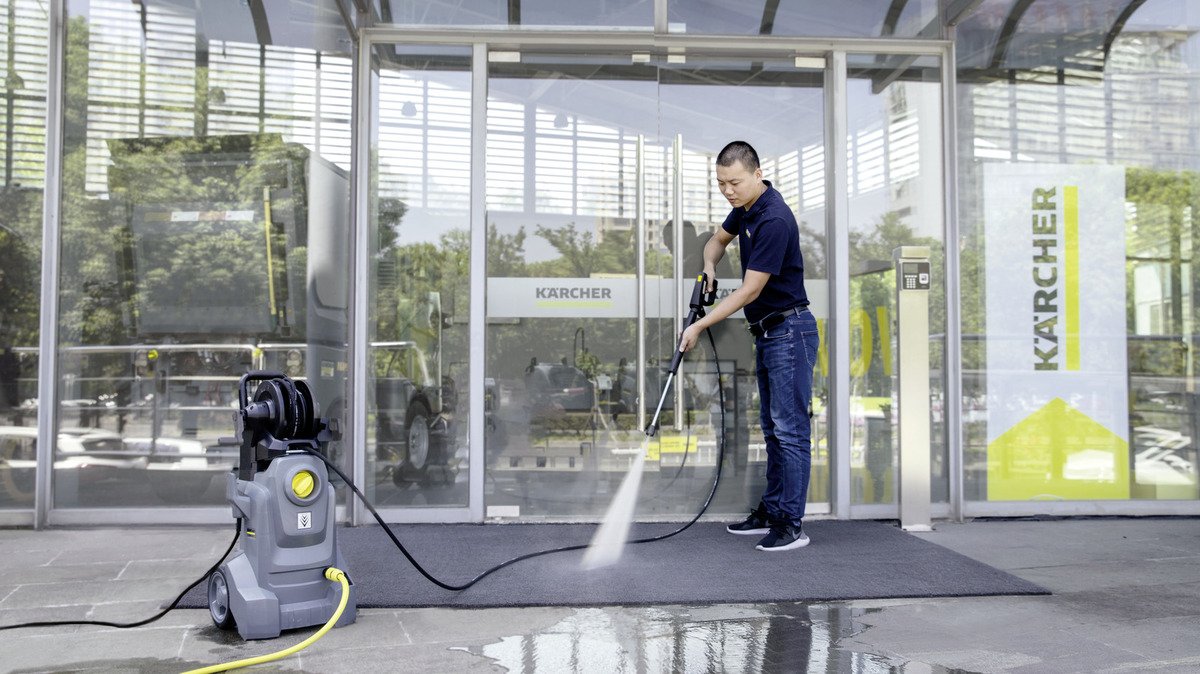Feelin' the pressure - Choosing the right jet washer
When it comes to cleaning literally hundreds of square feet of canal boat, a pressure washer (aka jet washer) can deliver impressive results while making light work of an otherwise arduous job. With my old creaky domestic model nearing the end of its useful life, it was time to purchase a new one – but where to begin?
I was overwhelmed by the mountain of options on the market, each competing for your custom with glossy images, eye-catching marketing reels, and reams of (impressive but often confusing) tech specs and data sheets – each promising to transform your life, or at least your “detailing” (car nerd for “cleaning”) experience.
The number of makes, models and variants on the market can be overwhelming
I didn’t know much but had set myself a budget of £200-£300, mainly based on what I could afford, how much I thought I was likely to use it (i.e., return on investment), and the fact that this was at least twice what my last one cost (ergo it ought to buy me one at least twice as good?!). I should also mention at this point that I wanted an electric rather than petrol/diesel model (#shorelinepower).
With my cost variable more or less set, I was free to focus on time (i.e. how long to clean a given surface area) and quality (i.e. how well the thing is built). In other words, performance and durability. I knew there would be some trade-offs to make, especially with my relatively modest budget, but was ready to start hunting.
Feeling trapped in the time-cost-quality conundrum - performance or durability?
Jet washers range from anything from around £50 for a basic entry/ light use (240v electric) domestic model (such as the Karcher K2) to over £5,000 for a top-of the range industrial beast (like the Kranzle THERM). In the £200-£300 price bracket, I was looking almost exclusively at domestic (i.e. “home and garden” use) rather than professional models – not really ideal.
On the domestic market, the big established brands (Karcher, Nilfisk, Stihl etc.) battle it out with relative newcomers (e.g. Ava, husqvarna, V Tuf), and other household names (Bosch, Titan, Mac Allister etc.). I was drawn to the Karcher K5, Stihl 110, and Nilfisk 150, all well-made machines with similar tech specs (~2kw motor, ~150 bar max pressure, 400-500 litres/hour, and 8-10m hose).
Established brands battle it out with relative newcomers & household names
All these domestic models offered strong technical performance, but lacked the durability I wanted. The Ava p60, for example, is particularly impressive on paper but just felt a bit plastic-y. Additional durability (i.e. higher quality induction motor, stainless steel pistons, all metal components etc.) seemed to take the price closer to £400-500 for high-end domestic/ entry level professional models.
I decided I’d be willing to compromise a bit on the key performance metrics (e.g., water flow rate, max pressure etc.) if that meant I could get a bit more durability and build quality, especially as the figures advertised by manufacturers are obtained “under test conditions” and don’t always translate into real life performance. Cleaning 1-2 boats/month, I really wanted something that would last.
Enter the Karcher HD 4/10 X Classic - a domestic/professional hybrid model
Enter the Karcher HD 4/10 X Classic. Its gray color (compared to the stander Karcher yellow), “HD” prefix, and unrefined appearance, immediately denote this machine’s commercial orientation. At £289.99 (sale price) direct from the manufacturer, this machine delivers a very reasonable flow rate of 400 l/h and max pressure of 145 bar, not significantly less than the domestic models listed above.
Where the Karcher HD 8/10 X Classic really delivers though, is in its components. Under the bland gray hood is a three piston axial pump with stainless steel pistons and a high quality brushless induction motor built to last. The exterior feels like it could take a few knocks compared to its domestic comparators, and the heavy duty metal wand and hose fittings just felt really solid.
So, with an additional 10% negotiated off the sale price, I placed an order with Karcher for the 8/10 – in what felt like a perfect balance of performance and durability offered at a very decent price point. I’m looking forward to testing it out in the near future and seeing how it stacks up in reality, but going back to my original brief – I think this hybrid domestic-professional model looks the business!




